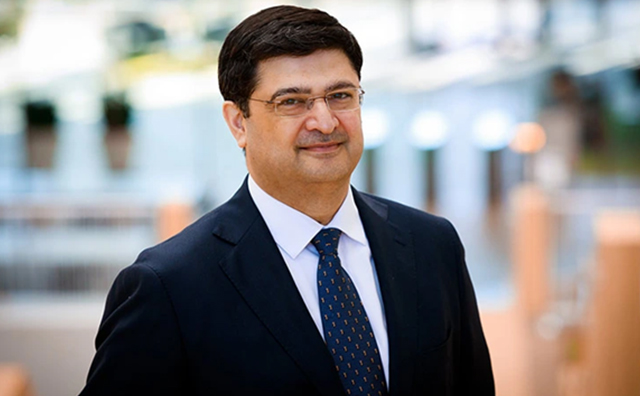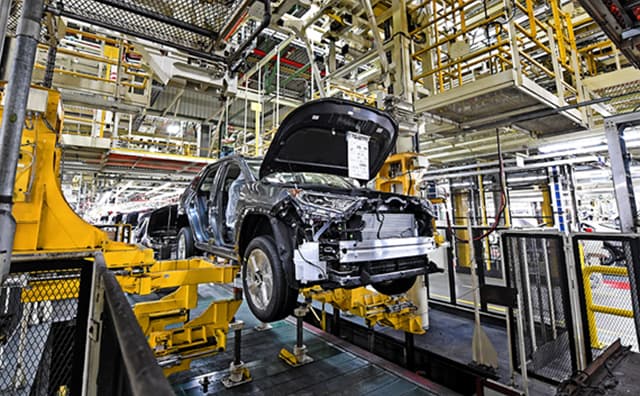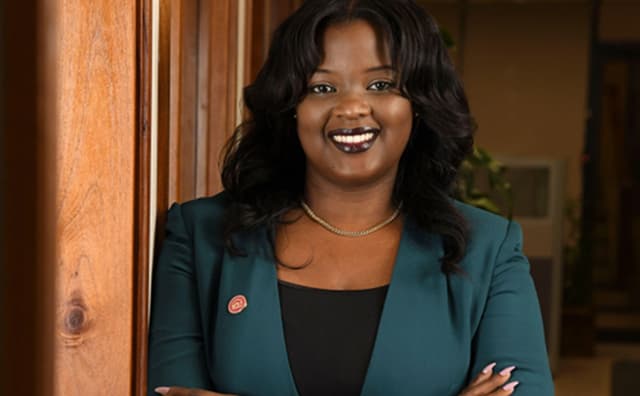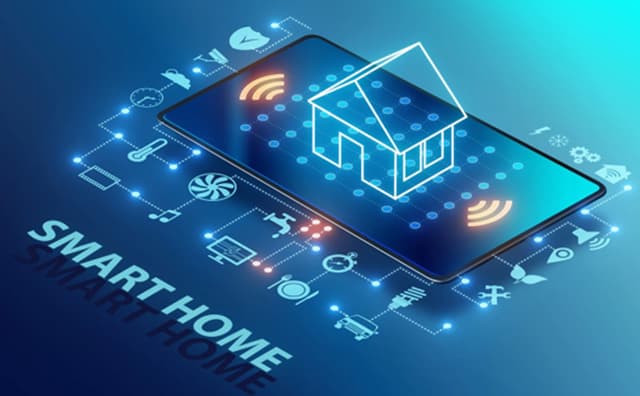Want to know more about how Fujitsu can help you achieve your sustainable transformation?
Smart cities: Enriching and empowering urban lives with digital innovation

Strategies driving the digitalization of city services have changed considerably in recent years, influenced by the new priorities set – and accelerated – by Covid-19 and a new pragmatism for delivering services that really work for citizens and bring efficiencies to public administration, too. Two smart city leaders, Joyce Edson from the City of Los Angeles, and Andrew Buss from the City of Philadelphia, share their distinct experiences and perspectives on shaping the next phase of the journey for their smart cities – the challenges and ambitions for a digitally enabled future for all their cities’ citizens. by Jessica Twentyman
Two smart city leaders, Joyce Edson from the City of Los Angeles, and Andrew Buss from the City of Philadelphia, share their distinct experiences and perspectives on shaping the next phase of the journey for their smart cities – the challenges and ambitions for a digitally enabled future for all their cities’ citizens.
By Jessica Twentyman xAn Angeleno born and raised, Joyce Edson has seen Los Angeles undergo some remarkable changes over her lifetime, not least during the almost three decades she has spent in government technology roles for the City.
Take, for example, J-Town or the Little Tokyo district, situated on the northeast of downtown LA. As a third-generation Japanese American — or Sansei — Edson frequently attended community cultural events here as a child. Today, while the Japanese influence remains strong in J-Town, the neighborhood is a far trendier and more diverse place than it was in Edson’s childhood. With its loft apartments and upmarket boutiques, it’s more affluent, too — but as in many cities worldwide, areas of deprivation can be found just a few blocks away. Like the other districts of the city, it is also an area where — under Edson’s leadership — public services are being enhanced and opened up with new digital capabilities.
As Deputy CIO and Executive Officer of the Information Technology Agency (ITA) for the City of Los Angeles, Edson and her team must cover a lot of ground — 469 square miles, to be precise. LA has around 4 million residents, speaking more than 200 different languages and dialects, and receives over 48 million visitors each year. That diverse population is served by 43 administrative departments, including the Los Angeles Police Department (LAPD), one of the world’s largest law enforcement agencies (where Edson previously served as a systems analyst), and the Department of Water and Power, the largest municipal utilities supplier in the US.
While around two-thirds of these departments have their own IT teams, the ITA has a unique role to play as a central hub that aligns those departments and ensures that residents, businesses, and visitors to LA have access to the digital services they expect from a leading global city. And as the city prepares to host the Summer Olympic Games in 2028, the ITA must accelerate in its stated mission of delivering ‘responsive, responsible, and excellent technology’ for Los Angeles.
It’s a complex challenge, but Edson has a simple way of expressing it. “It has always been our desire to make Los Angeles — a city that is so big, so expansive, so diverse — feel like a small town to the person who wants to interact with us,” she says. In other words, it’s about making the sometimes-impersonal experience of interacting with the public sector feel far more personal.
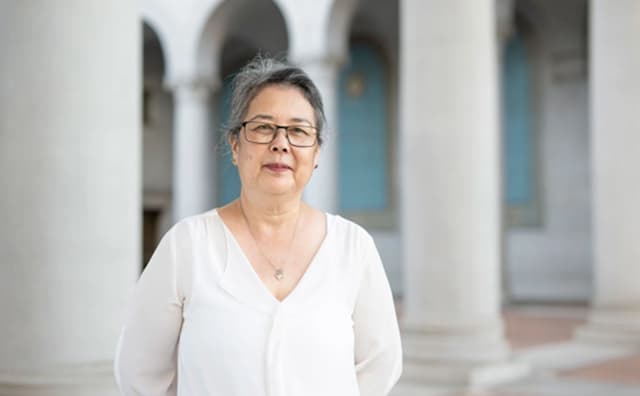 Joyce Edson, Deputy CIO and Executive Officer of ITA, City of Los Angeles (Photography: Edward Carreon)
Joyce Edson, Deputy CIO and Executive Officer of ITA, City of Los Angeles (Photography: Edward Carreon)
Ensuring CX stands for ‘citizen experience’
This focus on giving private citizens a personal experience of dealing with the public sector is by no means confined to LA. Back in mid-2019, researchers at strategy consultancy McKinsey published a report, ‘The Public Sector Gets Serious About Customer Experience.’ In it, they observed that “customer experience (CX) is getting more important everywhere — including in government. Citizens are accustomed to the experiences offered by companies from Amazon to Zillow and now want the same from governments.”
One contributor to the report, Carolyn Colvin, former Acting Commissioner of the US Social Security Administration, went even further. “The way I see it, our customers don’t have a choice when it comes to obtaining our services. They can’t go to a competitor if we are not performing well, so we have an even greater responsibility than does the private sector to provide a great experience for our customers,” she said.
Soon after the publication of that report, the Covid-19 pandemic struck, triggering widespread lockdowns, along with a vast, unprecedented increase in online applications and services, launched by the public and private sectors alike.
“As a direct result, the definition of what makes a smart city has really evolved,” says Matthew Hon, Chief Technology Officer for the Public Sector at Fujitsu America. “As government services have shifted to online delivery of services, there has been a big change in emphasis, from the fast deployment of specific applications to new services and platforms that address citizen priorities. City governments have begun to focus more on the outcomes that they’re trying to achieve, and then the technology — versus the ‘technology-first’ approach historically associated with large-scale digital infrastructure projects.”
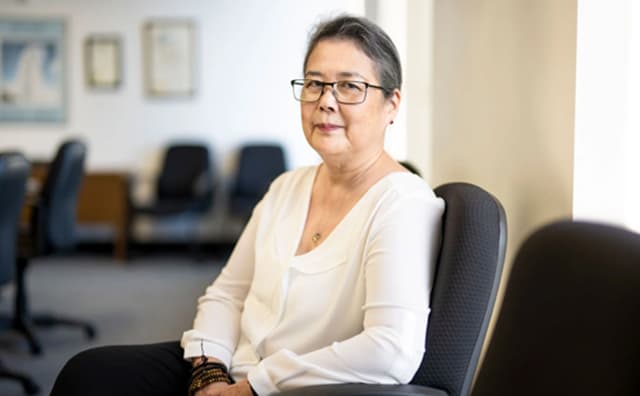 Joyce Edson, Deputy CIO and Executive Officer of ITA, City of Los Angeles (Photography: Edward Carreon)
Joyce Edson, Deputy CIO and Executive Officer of ITA, City of Los Angeles (Photography: Edward Carreon)
In LA, Edson reckons the city government achieved around five to 10 years’ worth of digital advances over the ‘Covid years’ of 2020 and 2021. A particular bright spot was the summer 2020 launch of the Angeleno Account, a portal designed to act as a one-stop-shop for digital city services.
“We like to think of the Angeleno Account as your front door to the city. Once you’re signed up, you can walk right in and access whatever digital services you need, in a way that is personally significant to you, based on your interests and needs,” says Edson.
The first applications to get connected to the Angeleno Account portal involved the city’s business procurement process, enabling city managers to post contracting opportunities and receive bids from businesses.
“From there, we put the call out to all city departments, encouraging them to integrate their own applications with the Angeleno Account, so that we can build out the catalog of services,” Edson explains. That now extends from multiple services for arranging appointments and permits for fire safety and planning, building, and engineering projects through to interactive maps showing everything from the location of public libraries to the layout of the sewer network.
Building out the Angeleno Account will be an incremental process, but it is well underway, Edson says. And her ITA team has developed a repeatable, standards-based model that makes it easier for city departments to get on board and connect both existing digital services and newly digitized ones to the portal. Next up for citizens: Requesting services and paying bills at the LA Department of Water and Power; booking activities at any LA Department of Recreation and Parks facility; applying for a Street Services permit to prune a tree or paint your curbside; and more.
What really makes a city ‘smart’?
For many years, a great deal of the buzz around ‘smart cities’ has centered on adding intelligence and connectivity to urban infrastructure such as utilities networks, street lighting, and parking meters by adding sensors that tied them into the Internet of Things (IoT) — and enabling them to report on their status and usage. That’s important, of course, as is the technology layer above them, which translates the raw data feeds into actionable alerts and insights for public-sector teams. Together, these two layers can do much to help municipalities streamline operations, cut costs, and become safer and more sustainable.
But a more expansive view of the smart city considers a third level, according to Andrew Buss, Deputy CIO/Public Technology and Innovation for the City of Philadelphia. And that third level, he explains, is a digital services layer that makes cities more responsive to residents and visitors by addressing their needs, answering their questions and tackling their concerns.
“Expanding the idea of a smart city in this way is far more interesting because the focus is squarely on people and tangible outcomes, rather than the underlying technologies. I like to think our work reflects a drive to provide the public with a more meaningful experience of our city through well-designed applications, as well as improvement of our internal processes,” he says.
But this vision of ‘smartness,’ he says, cannot work without a hefty focus on the issue of digital equity — ensuring that all individuals and communities have the equipment and connectivity they need to fully participate in the life of increasingly digital cities. “For me and my team, the ideas of smart cities and digital equity are so intertwined as to be interchangeable. You can’t have one without the other.”
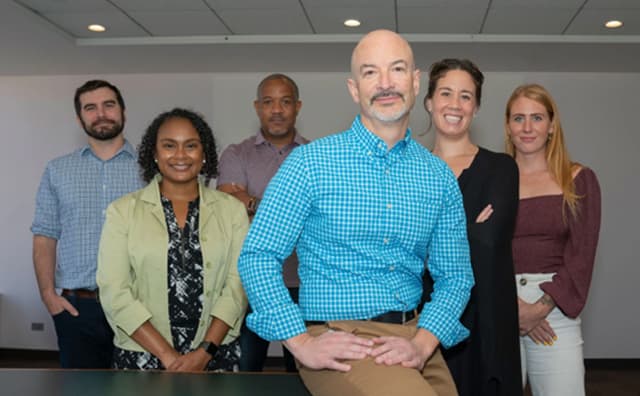 Andrew Buss, Deputy CIO/Public Technology and Innovation for the City of Philadelphia, with members of the innovation team (Photography: courtesy of City of Philadelphia)
Andrew Buss, Deputy CIO/Public Technology and Innovation for the City of Philadelphia, with members of the innovation team (Photography: courtesy of City of Philadelphia)
While promoting awareness of the digital equity challenge has long been a focus for Buss and his team, the pandemic did have the effect of making the task easier, he says. Figures from the US Census Bureau’s American Community Survey suggests that around 70% of Philadelphia households had access to high-speed broadband in 2019. With the Covid-19 outbreak, the almost one in three households that didn’t have that access were suddenly incredibly vulnerable — unable to work or participate in education from home, or access fast-changing information on staying safe, tests, and vaccinations, for example. “The pandemic really brought home for many people that this [digital access] was a serious, urgent issue,” says Buss.
The realization triggered a response to reset those numbers, and the past two years has seen the introduction of programs such as PHLConnectED, launched in August 2020 to provide subsidized internet access to families with school-age children, and the work of the Digital Literacy Alliance, a grant-making organization founded and managed by Buss and his team, which funds innovation among digital equity nonprofits.
Such initiatives have already had a positive impact, according to a summer 2021 survey conducted by the City of Philadelphia. It found that 84% of Philadelphia households now have high-speed broadband access, a figure that rises to 91% of households with K-12 children. But it also highlighted disparities in internet access across race, income and age groups; for example, 82% of black households and 77% of Hispanic households reported having a broadband subscription, compared with 88% of white households.
In February 2022, the City of Philadelphia signaled its intention to maintain the momentum, with the release of its first-ever five-year digital equity plan. This outlines where the city currently stands in terms of digital provision and sets out clear strategies for achieving four main goals: boosting the number of accessible devices; providing internet connectivity; developing digital training and workforce skills; and sustaining the ecosystem needed to increase digital equity.
Solving the public-private equation
One thing on which both Buss and Edson are clear is that the goals of their cities are simply not attainable without close cooperation with technology providers from the private sector.
A good example here is the PHLConnectED program, says Buss. “There’s simply no way that the city could have possibly stood up a program like that, providing subsidized internet for all the students who needed it in a city of 1.5 million people, without private and philanthropic support. We just don’t have the money to do that.”
But it’s not just a case of funding, he adds. The technology providers with which the City of Philadelphia partners also bring fresh perspectives, valuable expertise and additional resources to smart-city work, he says. “These arrangements are something I believe cities have to be open to. They’re often how you build the most interesting things — things that look good and work well, that win you the trust of the public who you want and need to engage with.”
Edson agrees. “It’s our job to look for technology and partnerships that are going to give us the best return on investment; that will be the most cost-efficient to sustain and support long-term; and that we can implement as foundational and continue to improve and expand on, without having to rip out and re-do when we embark on new projects. These things always win us ‘brownie points’ with our elected officials and they’re things we prioritize,” she says.
While around two-thirds of these departments have their own IT teams, the ITA has a unique role to play as a central hub that aligns those departments and ensures that residents, businesses, and visitors to LA have access to the digital services they expect from a leading global city. And as the city prepares to host the Summer Olympic Games in 2028, the ITA must accelerate in its stated mission of delivering ‘responsive, responsible, and excellent technology’ for Los Angeles.
It’s a complex challenge, but Edson has a simple way of expressing it. “It has always been our desire to make Los Angeles — a city that is so big, so expansive, so diverse — feel like a small town to the person who wants to interact with us,” she says. In other words, it’s about making the sometimes-impersonal experience of interacting with the public sector feel far more personal.
 Andrew Buss, Deputy CIO/Public Technology and Innovation for the City of Philadelphia (Photography: courtesy of City of Philadelphia) Article first published October 2022
Andrew Buss, Deputy CIO/Public Technology and Innovation for the City of Philadelphia (Photography: courtesy of City of Philadelphia) Article first published October 2022
“The partners that we trust the most are the ones that understand this and can provide us with technology that allows us to be more on our toes and less on our heels,” Edson adds.
One area where city leaders commonly need help from trusted third-party providers is integration, says Fujitsu’s Matthew Hon. “Data silos have long been one of the biggest problems in government, especially along departmental lines. So the tax office has a portion of citizen data, the housing department has another set, the utilities department has some, too. And most of those systems do not connect to each other or share data, which makes it very difficult to build a holistic 360-degree picture of a citizen and their challenges. It also frustrates the citizens that must share the same data repeatedly.”
It also makes it extremely difficult to develop apps or services that could help a member of the public who is dealing with a specific life event that would typically bring them into contact with several government departments and the relevant data they hold — such as a birth or death in the family, marriage, or launching a new business.
“If a city is truly focused on improving the citizen experience, then it needs to be able to support cross-agency or cross-departmental initiatives, and right now, many continue to struggle with that,” says Hon. “A good technology partner will typically have plenty of experience from both the public and private sectors of opening up data silos, and solid methodologies to share for achieving that goal.”
However it is achieved, there is a huge amount at stake when it comes to government customer (i.e. citizen) service, according to a recent report by William Eggers, Executive Director of the Center for Government Insights at consultancy firm Deloitte. “Citizens tend to trust proximate government more than distant government. By design, digital services make distant service more proximate. Because digital is now a first point of interaction for government, a positive online experience and secure and user-friendly services are critical to enhancing overall trust.”
And that sense of trust and proximity is just what Edson and Buss are seeking to deliver in practice, with digital capabilities making the services provided by a sprawling city feel as accessible as those of a small town.

